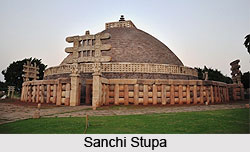 Economy of Mauryan Empire witnessed a well organized tax system devised by Kautilya. Land revenue was going to be a major source of income from the government. Land was subjected to regular assessments and an appropriate level of tax was levied. Industries and enterprises were also taxed. The government also introduced the concept of state owned farms. The king owned the land and his subjects were employed for its cultivation. Crops were used to sustain the population that worked on it and the surplus was taken by the government. This policy of the government eased the problem of overpopulation.
Economy of Mauryan Empire witnessed a well organized tax system devised by Kautilya. Land revenue was going to be a major source of income from the government. Land was subjected to regular assessments and an appropriate level of tax was levied. Industries and enterprises were also taxed. The government also introduced the concept of state owned farms. The king owned the land and his subjects were employed for its cultivation. Crops were used to sustain the population that worked on it and the surplus was taken by the government. This policy of the government eased the problem of overpopulation.
A stable centralized government and the unity of the sub-continent resulted in the rapid development of industry. Trade received a major boost as did various craft guilds. Able administration ensured that trade became easier, and the guilds soon developed into small scale industries. The development of guilds was an important step. Guilds were large organizations which employed labour for a particular commodity. Artisans joined the guilds as it provided steady employment and was easier. The government also found the guilds convenient as they also made the process of tax collection and administration easier.
All manufactured goods came stamped with a date, which would then be used by consumers to determine the age of the product. The sale of merchandise was regulated. Prices were monitored to ensure that a merchant was not making too much profit. A trade superintendent carefully evaluated the product, the price and the demand and supply situation. He would fix a value for the commodity. One fifth of this value would be charged a toll and a further one fifth tax was charged on the toll. There was no banking system but the concept of lending money did exist, and the rate of interest is estimated to have been about 15% per year. For loans in sectors like sea travel the rates were much higher.
Extensive trade relations were developed. Trade took place with several countries like Syria and Egypt in addition to several others in the West. There were many foreign traders who took up residence in Mauryan cities. Several goods were exported and imported. The Mauryan kings imported wines, figs, clothes and beautiful vessels made out of silver. The Mauryan exports were items of luxury like fine muslin cloth. The Mauryans soon built ships and hired them out for trade to merchants.
The Indian economy was a settled agrarian economy by this time. Animal rearing was also an important occupation.



















